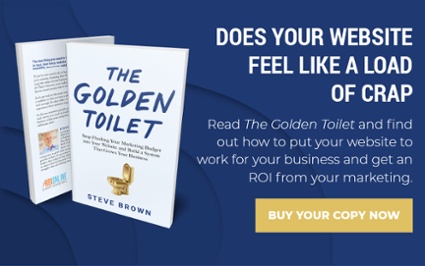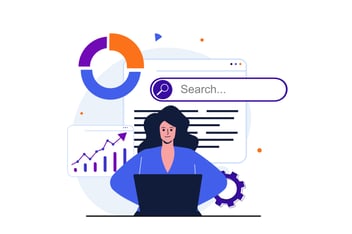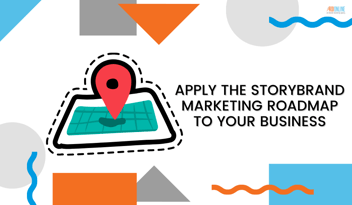DIY: How To Market Your Small Business In Any Economy
When you have a small business, you may wonder how you can market your brand and products, and get results. In this digital age, a newspaper ad or a billboard on the highways just aren't enough. So, have you ever considered using online or inbound marketing?

One of the biggest benefits of inbound marketing is that it isn't as costly as outbound marketing. Considering the financial struggles many business owners face today, the more you can save on your marketing, the better. Speaking of better, inbound marketing provides better results in the long run. So not only are you paying less, but you're also getting more out of each dollar.
But let's be honest. Not all business owners can afford an in-house graphic designer, marketing director, and copywriter. So how can you manage an inbound marketing strategy on your own (without going over-budget)? Follow these tips!
Social Media And Email
Using social media is one of the fastest way to get the word out regarding your small business. And you can't do better than free.
If you haven't already, create a Facebook business page, get on Twitter, optimize your LinkedIn, and start uploading photos onto Instagram. Also, depending on your business, consider using YouTube, TikTok, or Pinterest.
The type of content you share will depend on the social media platform you choose:
- On your Facebook page, offer specials, discounts, and coupons for your followers.
- Twitter is the perfect place to share news about specials, upcoming events, or new products.
- If you write blogs or create content frequently, share it on LinkedIn.
- Instagram should be used to share eye-catching product photos, designed customer testimonial graphics, and announcements.
- TikTok is ideal for reaching Gen Z audiences. Consider following a "challenge", creating funny clips, or telling a quick story.
- Pinterest is perfect for ecommerce businesses who want to showcase their products in a visual way.
The best way to get the most out of your social media platforms is always to use video. While video can seem expensive and overwhelming, it's a lot easier than you think. Tools like Lumen5 and Vidyard make producing videos as easy as clicking a button. Plus, they're significantly more affordable than hiring a videographer.
Another cost-effective marketing tactic is email. Ask fans to sign up for an email account to receive newsletters, and get even more discounts and product information. Use Constant Contact or MailChimp to easily create newsletters to send out to potential and existing customers.
Since most people connect more to email than standard snail mail, sending out email brochures and product updates is a good way to keep customers informed and interested.
Google And Yelp
Many people use local search directories when evaluating local services. Yelp and Yahoo are two of the most used local listings when it comes to searching for and reviewing businesses. These type of pages come up quickly in Google results, so you can really put your business in the spotlight.
Include all of your business information such as location, phone number, and website. Google is a powerful advertising tool. Use Google AdWords to place an ad that will increase your search marketing results. Google Places is a great tool for small, local businesses to use. Set up your own Google Places account and add all the details. This helps local consumers find your business. Add photos and relevant information to draw local customers in.
Blogging And Videos
Having a blog gives your business more chances to shine when consumers are searching. According to the Blogconomy, 61% of U.S. consumers have purchased a product based on information released in a blog. B2B marketers who blog earn 67% more leads than businesses that do not blog.
Blog about how to use your products, or advice relevant to your products; for instance, if you own a lumber company, write blogs about home improvement and link to your products and website.
Add YouTube videos to garner even more search results and make the content even richer. Expanding on the lumber business example, you could create step-by-step videos for how to construct a pergola for your outdoor entertainment area.
Also, update your blog frequently to keep customers engaged and to show up frequently in Google search results.
Turn Your Website Into A System
Your website is more than just an online brochure. It's part of a holistic marketing machine that collects, nurtures, and converts leads into paying customers.
At least it should be.
If your website it all about your business, confusing, full of jargon, and difficult to navigate, you're never going to get results out of your other marketing efforts. Your website should be easy to navigate, and include call to action phrases and sections, such as a portion where customers can sign up for your email list, or head to your Facebook or blog page.
And don't bother wasting time with keywords. After all, you're selling to humans, not search engines.
Spend some time thinking through your website content, design, and layout from your customers' perspective. Then make changes to improve its effectiveness so you can get the most out of it.
While your website is essential for digital marketing, it's not the only thing you'll need to get results. Without the four key components of the Business GrowthStack, the money you invest into your DIY marketing strategy likely won't pay off.
Want to learn more about the GrowthStack? Get a copy of my book, The Golden Toilet. In this book, you'll learn how to stop flushing your marketing budget into strategies that don't work and build a system that grows your business.





